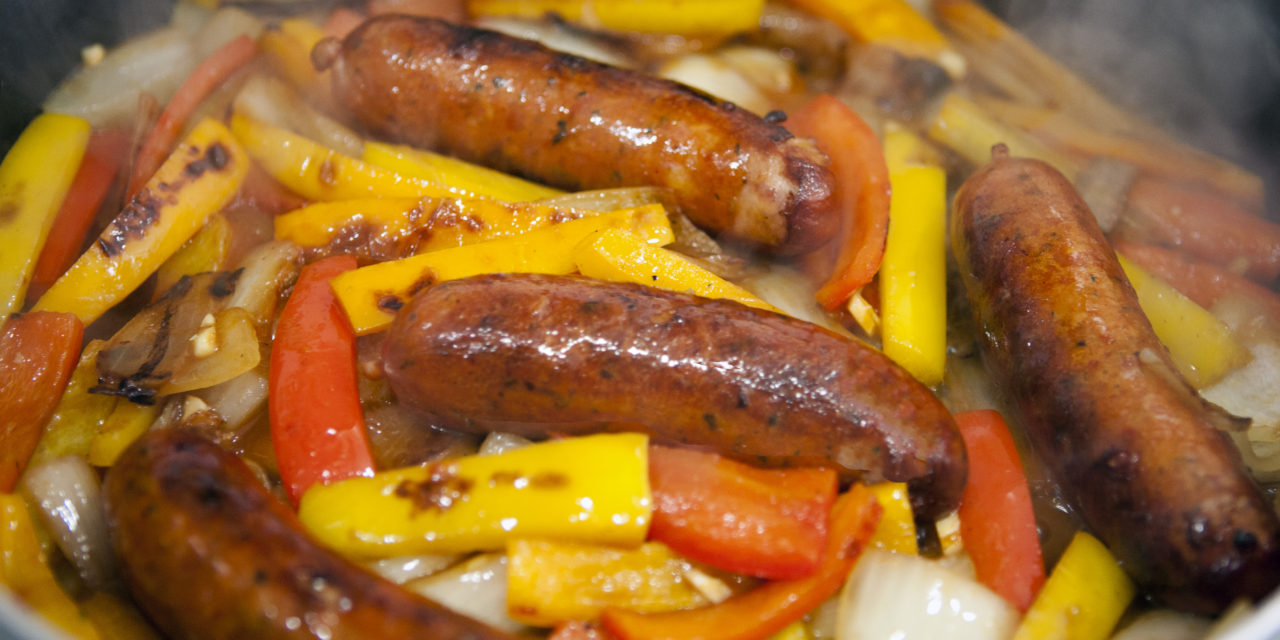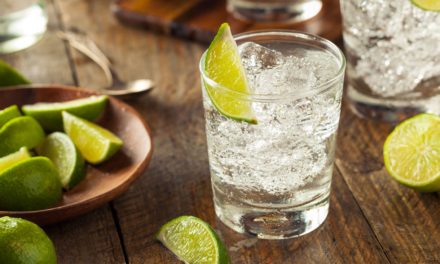
One of the most critical problems in the world today is finding the correct name for the dish containing peppers and sausages, this dish being one of the most important factors for life on earth. I say forget Iran and nuclear weapons; I say put the global warming issue in the toilet — let’s talk about a truly important issue.
I have no idea when or where Sausage and Peppers was invented, I suspect it was before the wheel as it is fundamentally more important than the wheel to the development of civilization. One would think that eating sausage and pepper would have come after the discovery of fire, but who knows, some clever caveman might well have discovered simply a hot rock would do very nicely.
Peppers, or “Capisicum cultivars” are literally as old as dirt, and found virtually everywhere on earth, including the Penguin Pepper that grows in central Antarctica (OK, I made that up). Sausage is nearly as ancient as peppers, some guy named Epicharmus wrote a comedy titled The Sausage around 500BC (I did not make that up). So like the Gin and Tonic, these two to ingredients seemed to be destined for one another. The question is did our caveman start frying some peppers and decide to throw sausage in, or was he frying his sausages when the little cave woman came along with a skin full of peppers and throw them into the mix. Sausage and Peppers or Peppers and Sausage are really two different dishes that are often misidentified.
This confusion has gone on long enough, time to clarify this key issue. There are two dishes: one called Sausage and Peppers (S&P), where the flavor of the Sausage predominates, and; one called Peppers and Sausage (P&S), where the peppers influence the outcome. Oddly enough, the proportions of sausages and peppers are roughly the same in both dishes (according to the expert, me); that is, 12 large peppers and 18 sausage links. The ingredient list follows:
- 3 pounds of pork/beef sausage
(about 18 links) - 12 large peppers
(typically genus Capisicum annum, red is better than green) - 6 medium peppers
(containing capsaicin, typically Capisicum chinense or frutescens) - 1 large onion
- 1 head of garlic
2 cups of dry white wine - (good wine, don’t use that stuff the neighbor gave you)
- 50 ml of sea salt
There are a number of additional ingredients, oregano, basil, black pepper, for example. These are in fact flourishes to the basic recipe, the ingredients above however, are absolutely required. Pork for example adds a low temperature fat that helps with caramelization in S&P and the citrus flavor uptake in P&S. Red sweet peppers contain 5X the vitamin C as green peppers which increases the citrus taste in both. The hot peppers release, of course, capsaicin giving both dishes the spicy character but in different ways. The onion, and especially the garlic, are very powerful and complex chemistry sets that add flavor, help maintain the color of the peppers, and reduce residual bacteria in the low temperature cooking phase. In addition to the addition of another fruity flavor, the wine is a necessary solvent for oils in the peppers and a deglazing agent. Finally, the salt; the choice of region is up to you, but sea salt is absolutely required. The juice from both S&P and P&S is derived, in part, by heating, and by dissolution with wine, and by extraction by salt. In fact, room temperature juice extraction by salt is the only way some of the more volatile oils can be extracted without being corrupted by heating.
S&P and P&S have very different cooking processes.
Sausage and Peppers
S&P starts with the searing of whole sausage links in a small amount of olive oil. We are looking to create a uniformly dark brown color on the sausage, not light brown, not golden brown, and certainly not gray. You can add a small amount of salt, but nothing else. There is a variant that adds half of the hot peppers to the frying sausages, but you must take care not to burn the peppers, and some hot peppers release so much capsaicin into the air you might need a mask. Once the sausages are completely caramelized, remove them from the pot.
Lower the heat a bit and begin to deglaze with a bit of wine. Do not deglaze completely at this point. Clean the stems and seeds from all the peppers. Stand over the hot pot (but not hot enough to smoke) and tear the peppers, that’s right, don’t slice them with a knife, tear them. The tearing process increases the flow of pepper juice and puts it in the pot, not on the cutting board. A single pepper should yield about 6 or 7 large chunks. As you add the peppers, continue to deglaze the pot, add a bit of wine to keep the bottom wet, if the peppers are slow at releasing juice, don’t let the bottom get dry. Alternatively add pepper chunks, salt, deglaze, add wine if necessary until all the peppers are in the pot. Thinly chop the onion and the garlic and add now, stir well to mix the onion and garlic into the peppers. You are not sautéing the onions and garlic, you are really steaming them.
Cover the pot. Once the peppers begin to get soft, but still hard enough to crunch a bit, lower the heat to simmer. You should have a nice bed of peppers on which you can layer your sausages. You can cut the sausages into smaller pieces if you prefer, just make sure you do not lose the juice from the sausages when your cutting. Cook covered for an additional 45 minutes, then stir once and serve. If you did it right, the peppers should still have a tiny bit of crunch, not mush. Enjoy.
Peppers and Sausage
P&S, on the other hand, starts with the peppers. Again in olive oil, but two or three times the amount as above. Slowly sweat a few (maybe 3) peppers, prepared in the same way as we did above. Once the peppers start to cook, add the onions and the garlic. This time we are going to sauté the onions and garlic, but only lightly and with the first batch of peppers. We want wilting, not burning, be careful. P&S is a lighter flavored dish, not meant to be as rustic and woody as P&S. I like leafy basil in this dish, and I add it at this point, but it’s only a personal preference. Once everything in the pot is wilted (overcooking the peppers in this phase isn’t the end of the world) turn off the heat and remove the peppers, onions, and garlic. Do not remove any liquid.
Cut all the sausages into 1 or 2 inch pieces. Add them to the pan and raise the heat until the sausage begin to sauté, not fry. This time, we’re going for a light brown, or gray brown color. If you sauté too fast you will boil off and degrade the light pepper flavors, patience. Sauté the sausages in small batches if your pot is too small, then go buy a bigger pot. Once all the sausages are done, you should have only a little stuff to deglaze, so deglaze. Add the cooked peppers, onions, garlic mixture stir very well and continue the cooking process. Lower to a simmer, pile the peppers on top of the sausages, add the wine and the salt, and cover. This second phase should take about 30 minutes. If you do it right, the peppers in the base will be very soft and much reduced while the peppers on the upper layer still have a bit of crunch. Check a pepper on the top to see if it’s done, then stir and serve. Enjoy.




